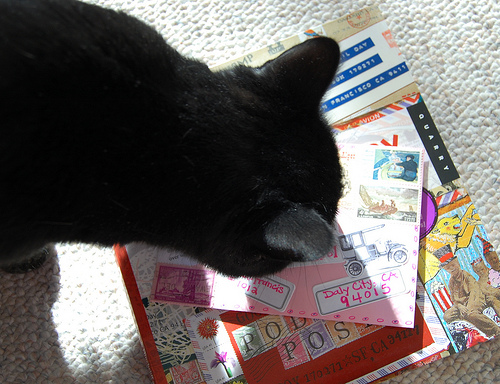4 Ways to Use Humor in Your Fiction
Humor is one of the most diverse tools in the writer’s toolbox, making it unfortunate that so few people make proper use of it. Humor is often thought of as simply a cheap laugh, a way to add a lighthearted note to a story, and nothing more. In reality, the concept of humor is much more complex.
Humor, when written correctly, redirects attention and causes an unexpected twist for the reader that not only sharpens their attention but can also deliver the “sucker punch” when they least expect it.
Here are just a few ways humor can be used effectively in fiction writing:
Relief of Tension
Perhaps the most common use of humor, in this scenario the author includes a brief moment of humor to alleviate rising tension.
If a scene contains an overabundance of suspense, it can become saturated and will prove exhausting to the reader. A well-timed quip from even a minor character can go a long way in providing a much needed “break” for the reader.
For example, suppose a group of high school students are being chased through an abandoned house by a killer. They stop to catch their breath and one of them comments, “You know, Mr. Grant’s calculus class isn’t looking so bad right now.” Not only does this provide a brief moment of light heartedness, it also helps underscore the peril of the current situation.
Heightening of Tension
Ironically, humor is just as effective at ramping up tension as diffusing it. One of the best ways to emphasize a grave situation is to contrast with a lighthearted atmosphere.
Alfred Hitchcock, the master of macabre, brilliantly made use of this concept in his films. Often when the “disaster” strikes, it is at a party or other cheerful event. This, perhaps more than any other situation, delivers the “sucker punch” that the viewer is not expecting.
Conversely, if the viewer knows something the characters do not, their happy oblivion increases tension tenfold.
Suppose a group of friends are seated at a table making jokes, all while a sniper has a gun trained on them. The humor of the friends talking greatly increases the tension of the unseen gunman.
Relaying of Information
As many students of writing know, to provide proper vision for the reader, situations must be shown, not told. Information relayed through a block paragraph by the narrator is likely to be skimmed over or outright skipped. It is therefore necessary to relay information through more creative channels.
Humor is an excellent way to accomplish this. Let’s suppose it’s necessary to provide information about what happened between two characters last summer. Rather than having the narrator blandly spell it out, a creative alternative would be to have a section of witty banter between the two. Example:
“Nice move, Rob. That’s like last summer, when we drove out to California in that rickety rust bucket you call a car.”
“There was nothing wrong with that roadster and you know it. You were just in a bad mood because you got dumped by Jenny. She must’ve never gotten a clear look at your face before that, or she’d have thrown you over months before.”
“That’s rich coming from a guy who dropped out of school to make it big in Hollywood. Yeah, how’d that go again, Rob? Don’t remember you signing too many autographs.”
Through this lighthearted exchange, we actually gain some rather useful information about the characters that would have appeared dull and uninteresting were they simply laid out by the narrator.
Conveying the Mood of a Place or Situation
One area of writing that can be potentially difficult is describing places or situations in such a way that the mood or feeling of the place or situation is understood. Humor can be a valuable tool in these instances by likening the setting to something with which the reader is familiar.
A classic way to describe the feeling of someone “caught in the act” is to say they were seen with “their hand in the cookie jar.” Suppose you were describing the attitude of a small “hole in the wall” diner. Here’s a possible description of the place:
The joint was so dimly lit that activating the jukebox was really just a game of musical Russian roulette, which you would always lose because the thing was broken anyway. One got the feeling that you could not only hear a pin drop, but that this event would be considered the highlight of the day and might even make it into the paper tomorrow morning.
This humorous description of the diner conveys the “feel” rather than the literal description of the place, providing a much more engaging experience for the reader.
Humor is Fun
Though rather simplistic, at the end of the day, humor is fun. Everyone likes a bit of comic relief now and again. Providing humor for the reader shows a dedication to their satisfaction.
Rather than a one-sided exchange in which the audience is expected to commit their full attention, empathy, and emotion, humor is the avenue through which the author can “give back.”
Whether it is a quip at the end of an intense fight scene, a joke to comfort a grieving character, or a “just because” comical line thrown in a long descriptive scene, humor can be the dessert at the end of a long meal for the reader. At the end of the day, that’s what humor is—a brief departure from the seriousness of the world around us. Just watch out for the sucker punch.
Jonathan Vars is a Christian fiction writer from New England, founder of the writing website Voltamps Reactive. His work has been published by academic websites and his first novel, Like Melvin, is slated for release in the near future.












I agree with every point in this useful article.
So glad you found it useful! I have picked up a lot of tips along the way, so I appreciate the opportunity to give back if I can.